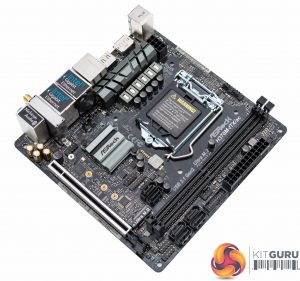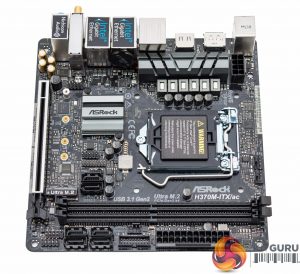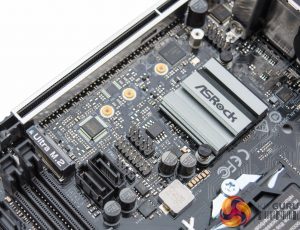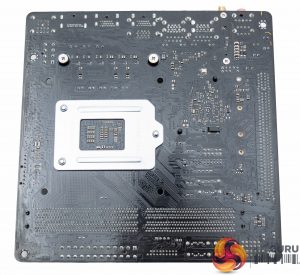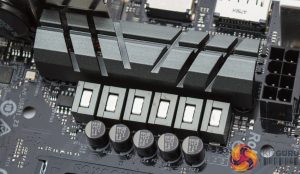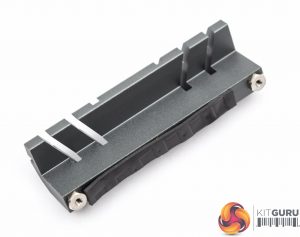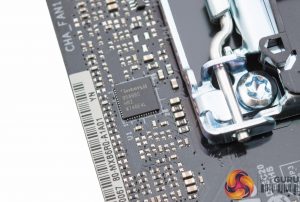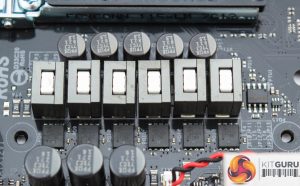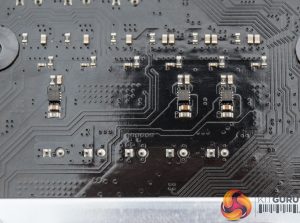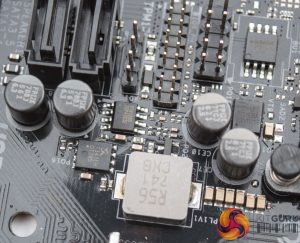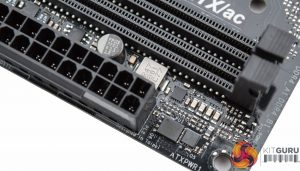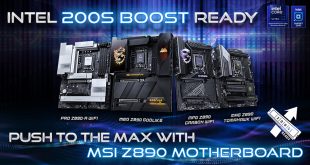The ASRock H370M-ITX/ac is a plain motherboard as the space constraints of the mini-ITX form factor do not leave much room for customisation. Both the chipset and CPU VRM heatsinks are compact in size with a grey colour, while the entire board uses a black colour scheme. There's no onboard RGB lighting to speak of, neither are there any expandable RGB headers to add some later on.
The overall design is plain and simple, reflecting this motherboard's affordable price point.
There are six vertically-facing SATA ports located either side of the two DDR4 slots. The M.2 slot sits between the reinforced PCIe slot and the chipset heatsink, up to 80mm M.2 devices are supported with SATA or PCIe operational modes.
The rear I/O is well equipped, making this motherboard look like an ideal candidate for a Home Theatre PC. There's dual HDMI, DisplayPort, dual Intel Gigabit and eight USB ports in total.
The top of the motherboard has two fan headers, the third sits next to the 24 pin. CPU power comes in through the single 8 pin EPS connector.
The M.2 slot sits in a congested centre section of the motherboard that is busy with various controller ICs and the chipset heatsink. Annoyingly, the SATA port that shares SATA bandwidth with the M.2 slot (SATA3_1, when using a M.2 SATA device) is not in this section of the motherboard. It would seem sensible that the least accessible SATA port (SATA3_4 or SATA3_5) should be the only SATA port at risk of deactivation, clearly ASRock didn't agree.
The CPU VRM heatsink is very compact in size and therefore not suitable for any extended high-current system loading. Thankfully, the H370 chipset doesn't allow for CPU or memory overclocking so it seems unlikely the CPU VRM will ever be under significant strain.
The CPU PWM controller is an Intersil ISL95866c which is a 4+3 channel controller. In this instance it appears to be operating as a 4+2 phases solution with four phases for the vCore and 2 phases for the iGPU. It includes two integrated drivers for the vCore and one for the iGPU.
ASRock is using what it calls a “Dual-Stack” design for the MOSFETs. In other words, each MOSFET IC contains one high-side and one low-side MOSFET, to save space. The specific brand and model used is the sinopower SM7341.
Other components used include Nichicon FP Series capacitors, which are rated for 12,000 hours of endurance (FP12K), and power chokes/inductors that support up to 60A of current.
There appear to be another three drivers (likely Intersil ISL6608) on the underside of the motherboard taking the total number of drivers, including integrated ones, to six which matches the total number of phases.
There are a number of other MOSFETs (Sinopower SM7341EH & SM3331, Nikos PZ0903BK, etc.) and drivers (Richtek RT8120B, etc.) near the SATA ports and motherboard 24 pin, for the VCCSA/VCCIO VRM and for the memory VRM respectively.
 KitGuru KitGuru.net – Tech News | Hardware News | Hardware Reviews | IOS | Mobile | Gaming | Graphics Cards
KitGuru KitGuru.net – Tech News | Hardware News | Hardware Reviews | IOS | Mobile | Gaming | Graphics Cards


